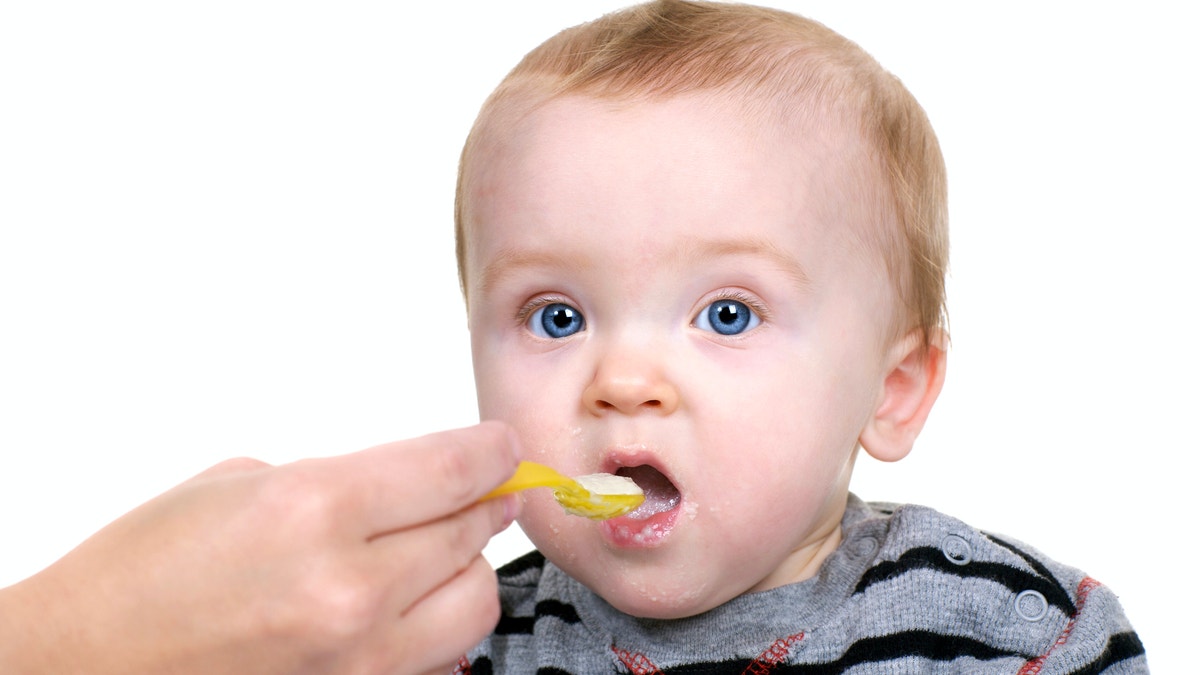
Baby being fed rice cereal. (iStock)
Research has shown that a mother’s lifestyle and age affects her offspring, but now science is concluding what common sense has held true— the father can also contribute to the health status of children.
“We know the nutritional, hormonal and psychological environment provided by the mother permanently alters organ structure, cellular response and gene expression in her offspring,” senior study investigator Joanna Kitlinska, an associate professor in biochemistry, and molecular and cellular biology at Georgetown University Medical Center, said in a news release.
“But our study shows the same thing to be true with fathers — his lifestyle, and how old he is, can be reflected in molecules that control gene function,” Kitlinska said. “In this way, a father can affect not only his immediate offspring, but future generations as well.”
The study, published in the American Journal of Stem Cells, is a review of human and animal evidence published to date on the link between fathers and heritable epigenetic programming.
For example, a newborn can be diagnosed with fatal alcohol syndrome (FASD) even if the mother never consumed alcohol.
“Up to 75 percent of children with FASD have biological fathers who are alcoholics, suggesting that preconceptual paternal alcohol consumption negatively impacts their offspring,” Kitlinska said in the news release.
Researchers also found that advanced paternal age is correlated with elevated risks of schizophrenia, autism and birth defects in his children. Fathers who had a limited diet in pre-adolescence were linked to a reduced risk of cardiovascular death in his children and grandchildren, and psychosocial stress on the father is linked to defective behavioral traits in his offspring.
“This new field of inherited paternal epigenetics needs to be organized into clinically applicable recommendations and lifestyle alternations,” Kitlinska said in the news release. “And to really understand the epigenetic influences of a child, we need to study the interplay between maternal and paternal effects, as opposed to considering each in isolation.”




















